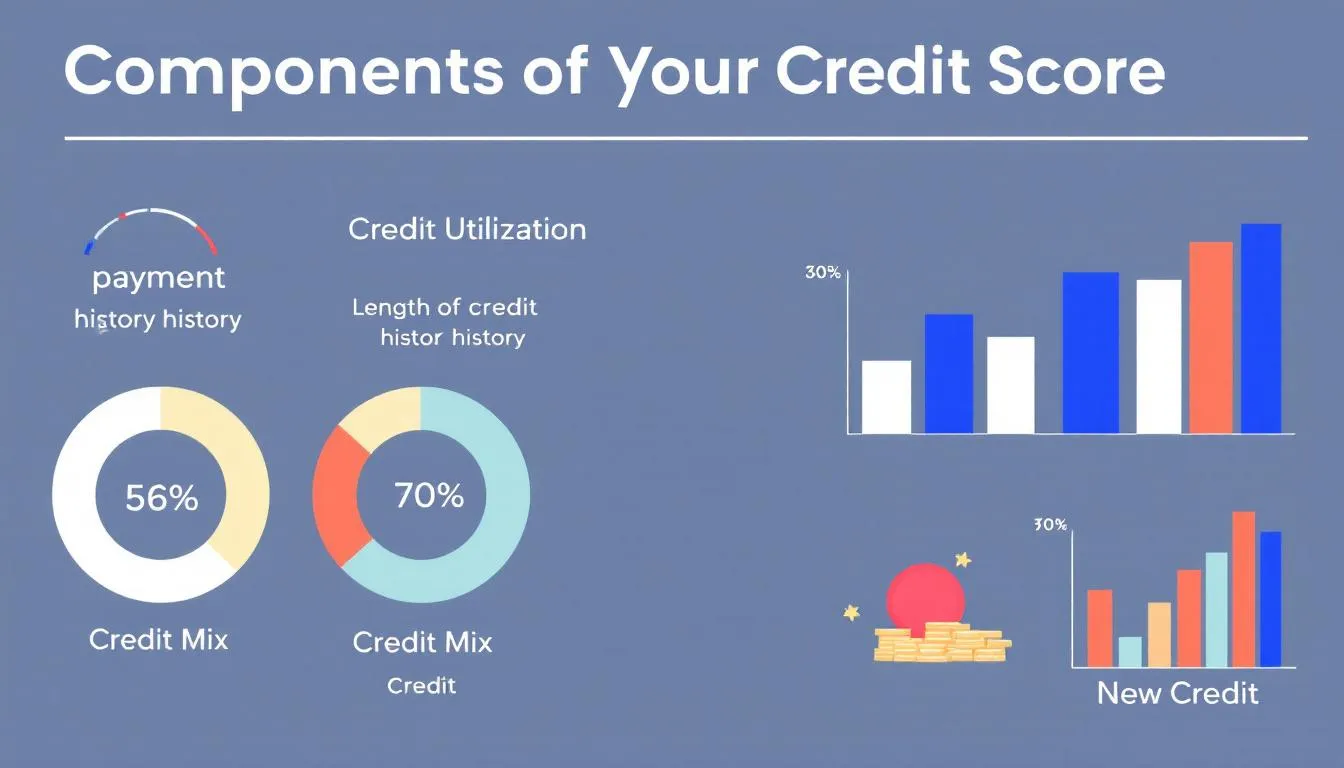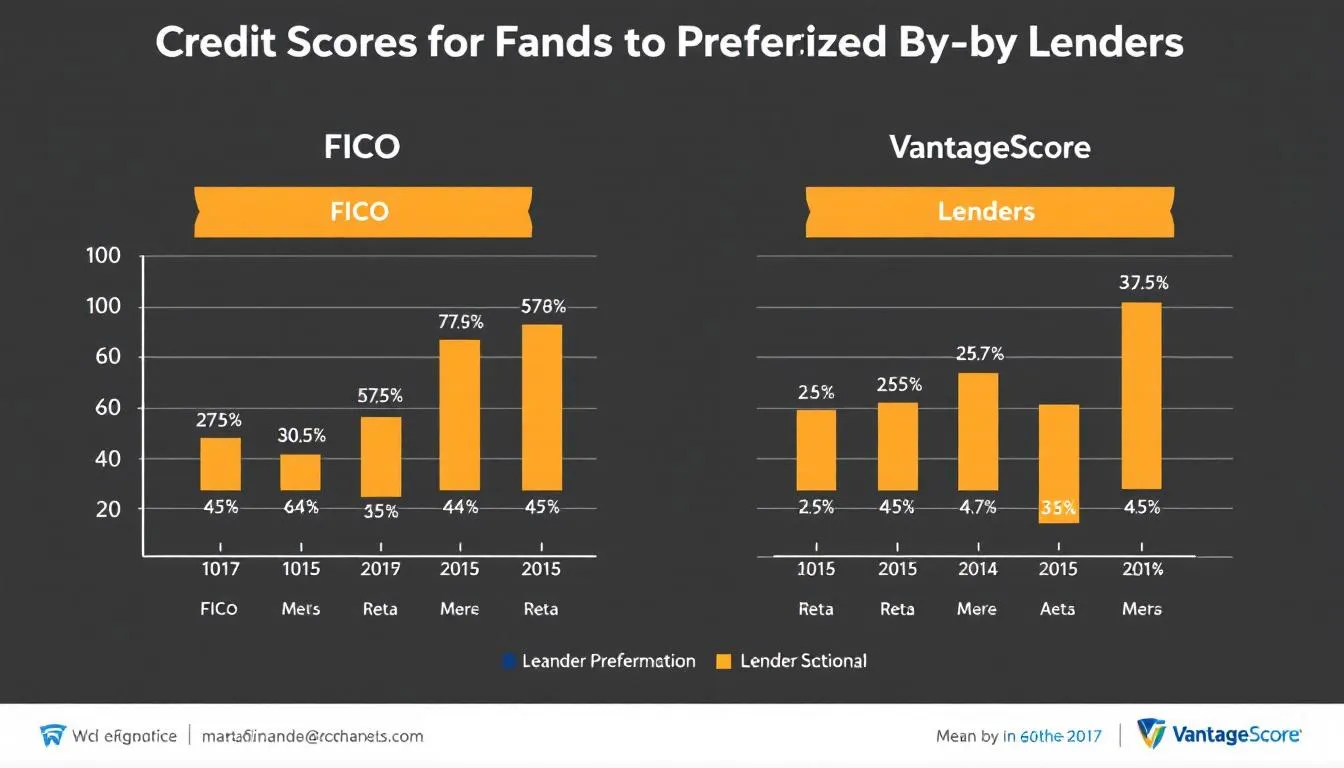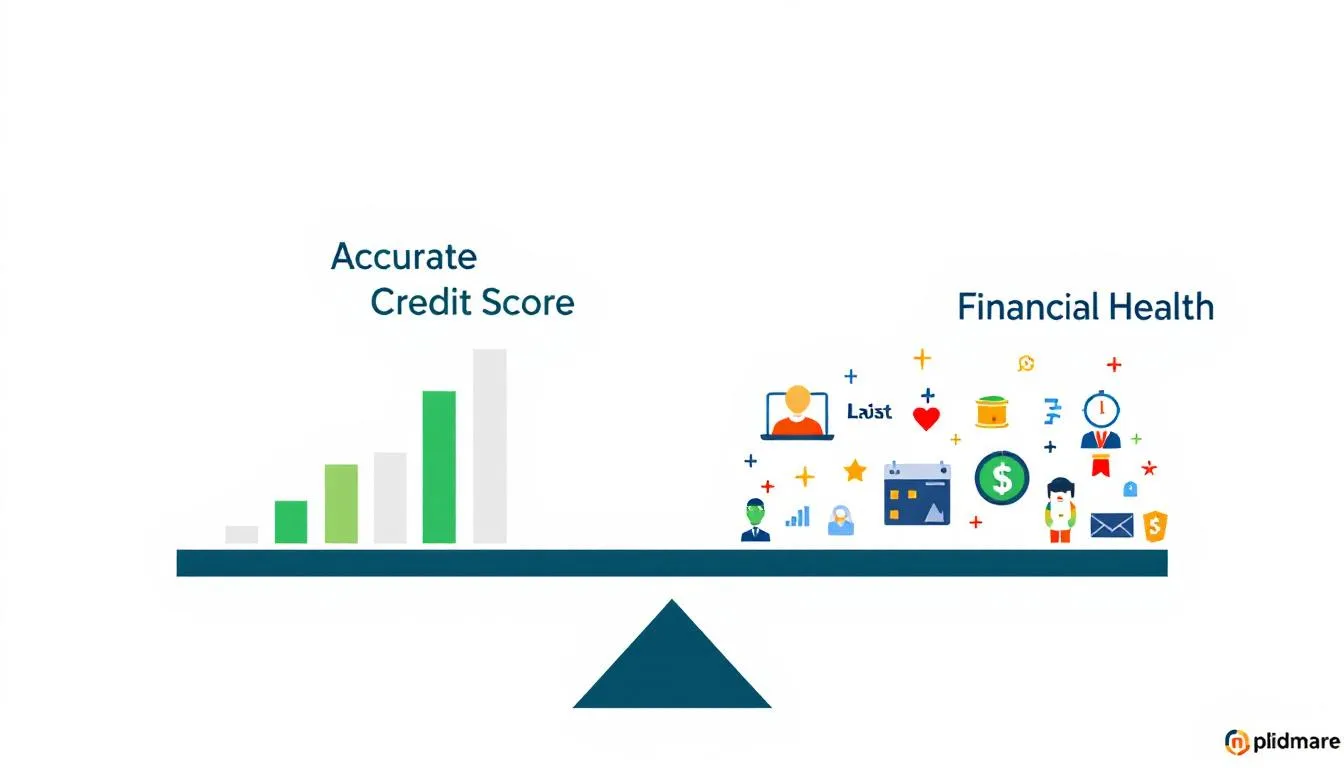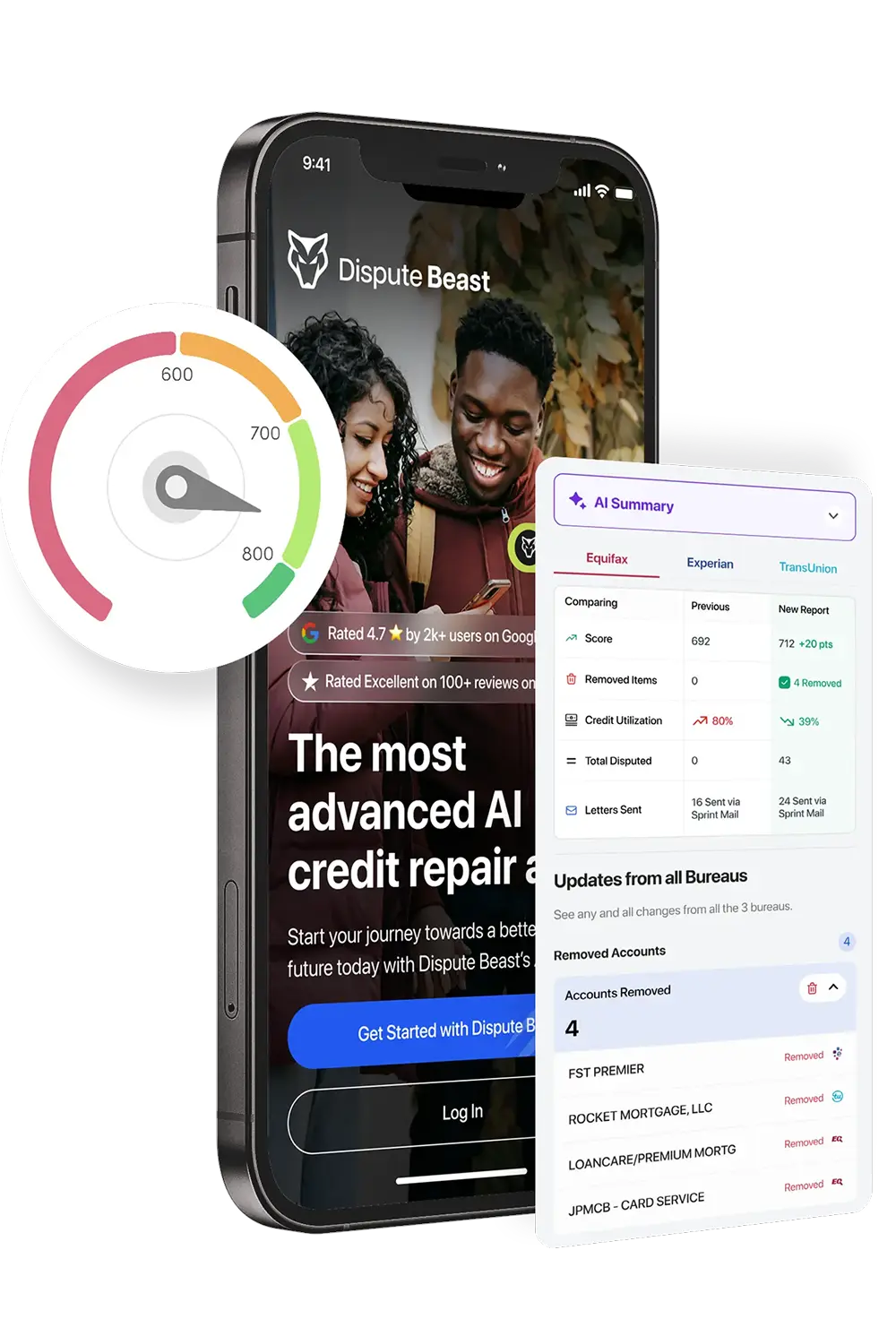
Wondering which credit score is most accurate? This article dives into FICO and VantageScore, the two main scoring models, to understand their methods and help you decide which one you should trust for your financial health.
Key Takeaways
Credit scores gauge an individual’s creditworthiness, with FICO® and VantageScore® being the predominant models used by lenders, each having distinct methodologies.
Variations in credit scores result from differences in data reported to credit bureaus and the unique weighting applied by scoring models, necessitating regular monitoring for consumers.
Maintaining an accurate credit score is vital for securing favorable loan terms and financial opportunities, with tools like Dispute Beast facilitating effective credit repair.
Understanding Credit Scores

Credit scores are key indicators of an individual’s creditworthiness, influencing their ability to obtain loans and favorable interest rates. Scores typically range from 300 to 850, with higher scores indicating a lower risk of default. But what factors contribute to these powerful three digit number?
Various scoring models exist to provide different perspectives on a consumer’s credit risk. This reflects the complexity of credit evaluation and the need for multiple tools to assess financial behavior accurately. For instance, what one model might consider as a minor issue, another might see as a significant risk. This can lead to different scores for the same individual, adding another layer of complexity to the primary credit scoring models evaluation process, including a single credit score.
Credit scores above 670 are generally considered good, while scores below 579 are viewed as poor. Knowing your score can help you take steps to improve your credit, such as reducing debt or correcting errors on your credit report.
Major Credit Scoring Models
FICO® and VantageScore® are the two dominant credit scoring models used by lenders. Each has its own methodology for calculating scores, and understanding these differences can help you manage your credit profile more effectively.
While FICO is the older and more widely adopted model, VantageScore offers a modern alternative that reflects current credit behaviors. Both models use similar data from your credit reports but weigh the information differently, leading to variations in your scores that are equally accurate based on the different companies and different credit scoring models provided.
An in-depth look at each of these scoring models reveals their unique characteristics.
FICO Score Explained
Developed in 1989 by the Fair Isaac Corporation, the FICO scoring model was created to help lenders assess credit risk based on consumer behavior. Today, FICO scores are calculated based on five key credit scoring factors:
Payment history
Amounts owed
Length of credit history
Credit mix
New credit
Among these, payment history is the most important, as it indicates how reliably you have paid your bills in the past.
Credit utilization, which represents the amounts owed versus available credit, is also a significant factor. The FICO credit score typically ranges from 300 to 850, with fico auto scores being relevant for auto lending:
A good score being between 670 and 739
The most accurate credit score being the most commonly used version, FICO Score 8
Industry-specific versions available for auto and credit card lenders
Equifax credit scores are also an important consideration in evaluating creditworthiness.
The significance of these factors can vary based on your credit report’s contents. Even minor changes in your credit behavior can affect your FICO score, so regular monitoring is vital for maintaining good credit health.
VantageScore Explained
Founded in 2006 by Equifax, Experian, and TransUnion, VantageScore was created to provide a credit scoring model that reflects current credit behaviors. This model evaluates creditworthiness based on:
payment history
credit utilization
account age
total debt
recent inquiries
the total amount of recently reported balances owed.
The VantageScore scale ranges from 300 to 850, with a good score typically falling between 661 and 780. One of the key advantages of VantageScore credit scores is its accessibility for new borrowers, making it a popular choice among over 3,400 financial institutions.
Understanding these factors allows you to manage your credit profile better and make informed decisions to improve your score. VantageScore’s focus on recent credit behaviors is particularly beneficial for those aiming to build or rebuild their credit.
Why Credit Scores Vary
Credit scores can vary due to differences in information available on credit reports from different bureaus. Timing also plays a role, as scores are snapshots based on the latest available credit data. Consequently, your score could change as new information is reported.
Creditors may report information to different bureaus at various times, affecting the consistency of your credit scores. If one bureau receives updated data before the others, your score with that bureau may differ. This discrepancy often frustrates consumers attempting to understand their credit health.
Different scoring models also analyze credit reports in unique ways, leading to variations in scores. For instance, FICO and VantageScore weigh certain factors differently, which can result in different scores even if the underlying credit report data is the same. Understanding these variations can help you compare scores, better manage your credit, and make more informed financial decisions.
Which Credit Score Is Preferred by Lenders?

About 90% of score lenders prefer FICO scores for lending decisions due to their long history and proven reliability in assessing credit risk. FICO scores are typically used for credit decisions, especially for loans, as they provide a consistent and standardized measure of creditworthiness.
While FICO scores are the primary choice, VantageScore credit and other credit scores are gaining adoption among a growing number of financial institutions. This model offers an alternative perspective on creditworthiness and is particularly useful for new borrowers or those looking to rebuild their credit.
Lenders can choose from various FICO and VantageScore models, as both companies periodically update their scoring criteria. Additionally, FICO scores are often tailored for specific industries, creating specialized versions for auto loans and top lenders credit card lenders and auto lenders. Understanding which score your lender prefers can help you better prepare for credit applications and improve your chances of approval.
How to Check Your Credit Score and Report
Regularly checking your credit score and report is essential for maintaining good credit health. Free copies of your credit report are available from AnnualCreditReport.com, which provides one credit score for free from each major credit bureau. Additionally, if a credit application is denied based on your report, you are entitled to a free credit report.
You can monitor your credit score over time with free monthly updates from your Experian credit report. Many credit card issuers, banks, and online services also provide free access to your credit score, making it easier to track changes and address issues promptly. Checking your own credit score does not affect it.
Regularly reviewing your credit reports helps you understand your financial health and make informed improvements. Staggering requests from different bureaus throughout the year allows you to maintain a consistent overview of your credit profile, catch discrepancies early, and enhance your identity monitoring.
The Role of Major Credit Bureaus
Experian, TransUnion, and Equifax reports are the three main credit bureaus and credit reporting agency responsible for compiling and organizing consumer data to create credit reports. Each bureau strives to develop comprehensive and accurate databases, which they sell to creditors for credit evaluation purposes.
Experian has become a global authority in the credit sector, maintaining extensive information on over 1.5 billion consumers and 201 million businesses. TransUnion credit score, established in the late 1960s, is one of the largest credit bureaus in North America with global operations. Founded in the late 19th century, Equifax has expanded internationally, offering credit-related services in various regions.
Competition among these bureaus drives the development of accurate and comprehensive credit reporting systems. Developed by the major credit bureaus, VantageScore aims to provide a more consistent scoring approach across different lenders. Understanding the role of these bureaus can help you navigate the complexities of credit reporting and maintain a healthy credit profile.
Importance of Accurate Credit Scores

Maintaining a good credit score is crucial for obtaining favorable terms on a loan or credit card and insurance rates. Credit scores significantly influence the financial opportunities available to individuals, affecting their overall financial health. A reliable credit score can result in lower loans and credit cards interest rates, potentially saving borrowers thousands over time.
Good credit scores improve approval chances for loans, credit cards, and rental agreements, providing wider financial options. Maintaining an accurate credit profile allows individuals to access better housing options and avoid high utility deposits. Additionally, a strong credit score can offer better terms on business loans, aiding entrepreneurs in expanding their ventures.
A good credit score helps secure lower interest rates and more favorable loan terms. By maintaining an accurate credit score, individuals can significantly reduce long-term costs associated with loans and insurance premiums. Recognizing the importance of accurate credit scores can empower you to take control of your financial future.
How Dispute Beast Can Help Improve Your Credit Score

Dispute Beast, an advanced DIY credit repair software, can significantly improve your credit score. Users can easily load their credit report and send dispute letters with just one button. Dispute Beast employs a Three-Level Attack Strategy against negative items at credit bureaus, data furnishers, and secondary bureaus.
Dispute Beast offers the following features:
Employs factual and compliance-based disputing to create effective letters designed to capture the attention of credit bureaus.
Personalizes letters using different fonts and formats, further enhancing their effectiveness.
Continuously monitors and helps eliminate new negatives every 40 days, ensuring ongoing improvement of your credit profile.
Credit repair through Dispute Beast is a gradual process, with most users seeing results after 6–12 attack rounds. The service is free with an active and paid subscription to Beast Credit Monitoring or Pro Credit Watch. By integrating with these monitoring services, Dispute Beast helps track progress using credit scoring models and provides a comprehensive approach to credit repair. For questions or assistance, you can reach Dispute Beast support.
Summary
In summary, understanding the various credit scoring models and the reasons behind score variations is essential for managing your credit health. FICO and VantageScore are the primary models used by lenders, each offering unique insights into your creditworthiness. Regularly checking your credit score and report can help you stay on top of your financial profile and address any discrepancies promptly.
Tools like Dispute Beast empower you to take control of your credit repair process, providing effective strategies and continuous monitoring to improve your credit score. By maintaining an accurate credit profile, you can unlock better financial opportunities and secure favorable terms on loans, credit cards, and insurance rates. Remember, your credit score is a powerful tool in shaping your financial future.
Frequently Asked Questions
How often can I get a free credit report?
You are entitled to one free credit report annually from each of the three major credit bureaus through AnnualCreditReport.com. Additionally, you can receive a free report if your credit application is denied due to information in your credit report.
Why do my credit scores vary between different bureaus?
Credit scores vary between different bureaus primarily due to differences in the information reflected in their credit reports, the timing of data reporting, and the distinct scoring models employed by each bureau. Thus, inconsistencies in these factors can lead to varying credit scores.
Which credit score do most lenders use?
Most lenders primarily use FICO scores for credit decisions, with approximately 90% favoring this model, although VantageScore is gaining traction among some financial institutions.
How can I improve my credit score?
To improve your credit score, focus on paying down debt, correcting any errors on your credit report, and regularly monitoring your credit profile. Utilizing tools like Dispute Beast can assist in disputing negative items and ensuring ongoing oversight of your credit health.
Does checking my own credit score affect it?
Checking your own credit score does not affect it, as this is classified as a soft inquiry and has no impact on your credit profile.



